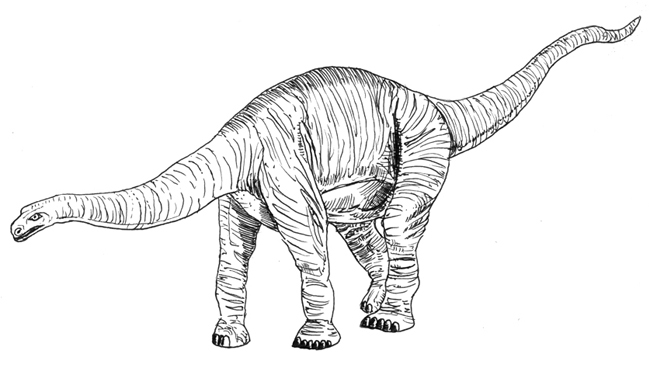Evidence of Primitive Sauropods and Pterosaurs Unearthed In Argentina
Insight into Early Jurassic South American Fauna
A team of scientists have announced the discovery of a number of prehistoric animal fossils from strata dated to approximately 190 million years ago. It is hoped that these new finds will help provide researchers with more information concerning the development and the diversification of sauropods, as well as providing an insight into the evolution of flying reptiles.
The finds from the fossil rich region of southern Argentina known as Patagonia will help scientists to build up a picture of life in the Early Jurassic. Little is known about the origins and evolution of a number of dinosaur families, this new location could become one of the most important sites in the world for early Jurassic dinosaur and pterosaur fossils.
Prehistoric Animal Fossils
Commenting on the importance of this discovery, Santiago Bessone, a researcher of the Museum of Egidio Feruglio, an institution based in the city of Trelew stated:
“No discoveries with these characteristics had ever been made in the region. It is an important discovery because it helps us understand the environmental diversity of the period.”
The expedition team, discovered a fossil rich layer of sediment some 50 miles from the Patagonian town of Gastre, in the province of Chubut some 500 miles of the Argentinian capital Buenos Aires. They are confident that these fossilised bones represent a new genus of primitive sauropod (long-necked dinosaur). Initial estimates indicate that one of the specimens may represent an animal up to 20 metres long, although much more work will have to be carried out to provide a complete scientific description.
The expedition, which took place in December, was financed by a number of German scientific institutes, although the majority of the large fossil bones have yet to be removed from their matrix, the scientists are confident that the dig site will yield bones from the limbs, vertebrae and also the hip region. It is unlikely that any sauropod skull material will be found, skulls of sauropods are exceptionally rare in the fossil record.
Little is known about the evolution of the Sauropodomorpha (long-necked, plant eating dinosaurs with lizard-like feet). It can be speculated that this new discovery may represent a genus of South America cetiosaur, a primitive, early sauropod group. Cetiosaurs are known from South America. In the late 1970s, a bone bed containing the remains of a number of large, cetiosaur-like dinosaurs was found in Chubut province. From 1977-1983 the site was excavated and the remains of at least 12 individuals was excavated (including five skulls). This dinosaur was named Patagosaurus (Lizard from Patagonia), these new sauropod fossils may represent an earlier type of cetiosaur that roamed South America.
An Illustration of a Primitive Sauropod (Cetiosaur)
Picture credit: Everything Dinosaur
The expedition also found fossil evidence of primitive flying reptiles (pterosaurs), although the remains are dis-articulated and fragmentary in nature, some of the bones indicate animals with wingspans in excess of one metre in length. It is hoped that once all the fossils have been properly prepared in museum laboratories, a number of new species of Early Jurassic prehistoric animal will be announced.
To view models and replicas of Jurassic pterosaurs and dinosaurs: Dinosaur and Prehistoric Animal Models.


